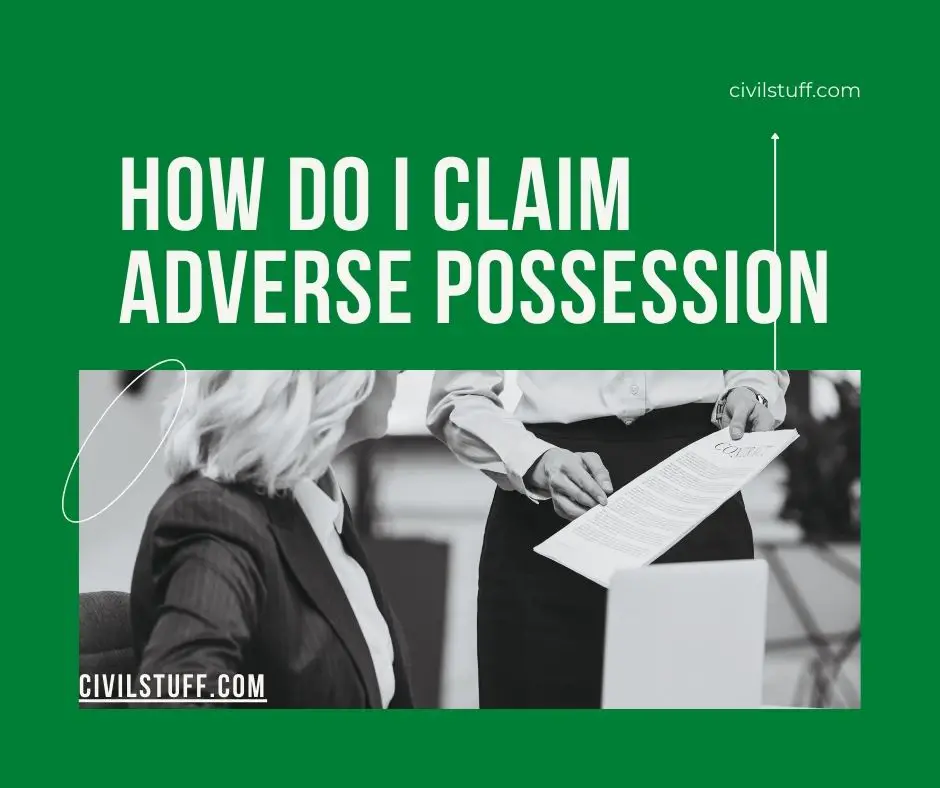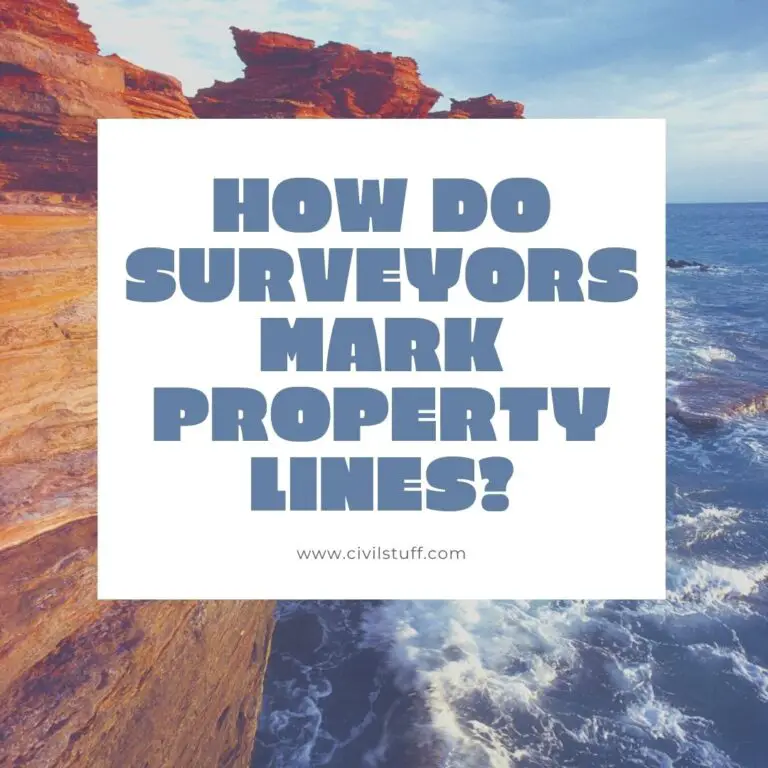How Do I Claim Adverse Possession In Texas?

How Do I Claim Adverse Possession In Texas?
To assert adverse possession in Texas, a person must first submit to the county clerk a notice of intent to assert adverse possession.
This notification must include the following information:
- The claimant’s name and address,
- A description of the land being claimed,
- The date of the claimant’s entry into the land,
- The filing date.
- The claimant must own the land for a minimum of five years after filing the notification.
During this period, the claimant must utilize the land per its current zoning classification. Additionally, the claimant must pay any taxes and assessments placed on the property during this period when the five-year period expires.
Anyone of legal age can claim adverse possession as long as they can show, among other things, that their ownership is:
- Exclusive means you are the only one who can use the property. You don’t have to share it with the owner or anyone else.
- Hostile: You took it without the owner’s permission and without their consent.
- Continuous: You’ve owned the property for the legal amount of time without taking any breaks or holding it at different times. But the court might still let you file a suit if other people have owned the property at different times and there is the privacy of estate between them.
- Visible: You’ve been using and owning the land in the open and haven’t tried to hide it.
- Real: You own the property and have been taking care of it.
How Long Does Adverse Possession Take In Texas?
💥🎁 Christmas & Year-End Deals On Amazon !
Don't miss out on the best discounts and top-rated products available right now!
🛒 Shop Now and Save Big Today!*As an Amazon Associate, I earn from qualifying purchases.
The default time for adverse possession is ten years. This is called the statute of limitations. That means the real owner of the property has up to 10 years to get rid of the person illegally living there or end their stay. In the following situations, the statute of limitations is shorter.
There is a three-year deadline if the person wrongfully in possession of the property has written proof of legal title, like a hard copy of an originally registered deed, but it is clear that this is a mistake.
There is a five-year “statute of limitations” if the person who is not supposed to have the land cultivates uses, or enjoys it, pays the property taxes, and again has proof of title.
The time period to take possession of land varies case by case. The court might let you take possession in a year if you’re claiming an abandoned house or a vacant lot. If you’re claiming an occupied property, the court will probably limit the period to four years.
If the owner was away for a short time, you could file a motion for summary judgment to get immediate possession of their property. You must file this motion within three months after the owner returned and settled into their property.
What Is The Adverse Possession Law In Texas?
💥🎁 Christmas & Year-End Deals On Amazon !
Don't miss out on the best discounts and top-rated products available right now!
🛒 Shop Now and Save Big Today!*As an Amazon Associate, I earn from qualifying purchases.
The concept of adverse possession is a legal notion that explains the circumstances that a party needs to follow to claim another person’s property through continuous possession or usage. Adverse possession is a form of constructive possession; a trespasser must meet four criteria to obtain title to land through adverse possession:
- They must enter or use the ground without the permission of the owner;
- They must actually be present on the land, as well as treating and using it as if it were their own;
- He or she must use the land in an open and obvious way
- He or she must use the land for a continuous period of time, without sharing possession with others unless it would constitute adverse possession by tenants in common.
How Do I File Adverse Possession In Texas?
First you gather all property related legal papers. Secondly for a claim of adverse possession to be successful, possession must be uninterrupted. If the owner of record made any attempt to regain the property such as a lawsuit, a letter requesting you to leave, or a police complaint for trespassing, the adverse possession period would begin again.
The Texas law regarding adverse possession heavily favors the record owner. Start by making sure the land is yours and that the owner is not living there any longer. Also make sure the documents are in order, because you’ll have to show proof of ownership with a copy of a deed or other title.
If the property owner still lives there, determine whether they have done anything to let you know they object to your presence on the land.
How Do You Prove Adverse Possession In Texas?
To establish a claim for adverse possession, a claimant must demonstrate the following:
- Actual possession of the disputed property.
- That is open and notorious.
- That is peaceable.
- That is under a claim of right
- That is consistently and continuously adverse or hostile to the claim of another person for the duration of the relevant statutory period.
Is Adverse Possession Legal In Texas?
💥🎁 Christmas & Year-End Deals On Amazon !
Don't miss out on the best discounts and top-rated products available right now!
🛒 Shop Now and Save Big Today!*As an Amazon Associate, I earn from qualifying purchases.
Yes, adverse possession is usually recognized. There are very few instances where the courts will not recognize a claim of adverse possession as long as both parties are on title to land and the claimant has been able to establish all of the necessary elements.
Adverse possession is recognized under Texas law if accomplished by one of two methods, express abandonment or implied abandonment. Under the express abandonment method, you can establish your adverse possession by showing that you were the owner’s tenant in common and by showing that you were on the land with her full knowledge of her ownership.
In most cases, she will have to make no attempt to remedy your occupancy. Under the implied abandonment method, a claimant must show that s/he occupied the land with actual or constructive possession for a continuous period or years.
Does Texas Have The Law Of Adverse Possession?
Yes, adverse possession is a legal concept that has been adopted in Texas as both a statute and common law. In Texas, generally, adverse possession refers to the acquisition of ownership by a grantee who openly occupies land owned by another without the consent of that owner. Adverse possession can be accomplished under the statute or under common law.
The statute of limitations states that an owner must file a suit to establish claim within four years after the date the owner assumes ownership. In some instances, this deadline may be set back by two years if the property is abandoned by the owner. Otherwise, it remains at 10 years after assumption of ownership. If the property is abandoned, then the adverse possessor has up to 10 years to establish possession.
How Do You Fight Adverse Possession In Texas?
💥🎁 Christmas & Year-End Deals On Amazon !
Don't miss out on the best discounts and top-rated products available right now!
🛒 Shop Now and Save Big Today!*As an Amazon Associate, I earn from qualifying purchases.
In Texas, there are several ways to combat adverse possession. First, a notice of dispute must be filed with the county clerk. This notifies the opposite possessor that your claim to the property is being contested. The second step is to initiate legal action against the hostile possessor.
This is a more direct method of contesting their claim, and a court hearing will likely be necessary to resolve the dispute. Thirdly, you might install a notice on the property stating that you are the legal owner and the opposing possessor is not welcome. This is a more aggressive strategy, but it may be required to safeguard your property rights.
This is why you should never settle for a low offer from the owner of the property who is trying to get rid of you. You need to start by taking a comprehensive look at your situation. You want to see if there are any gaps in your evidence that could be exploited by your opponent.
In some areas of Texas, the statute of limitations is as short as three months. This means that it is fairly easy to establish your adverse possession claim before the owner has a chance to file a suit. The main defense against a claim of adverse possession is the concept of acquiescence.
This occurs when the true owner does not object to the adverse possessor’s actions and does not file suit to evict the occupants, even if only by failure to file a lawsuit in a timely manner.
💥🎁 Christmas & Year-End Deals On Amazon !
Don't miss out on the best discounts and top-rated products available right now!
🛒 Shop Now and Save Big Today!*As an Amazon Associate, I earn from qualifying purchases.
Adverse possession can be defeated, however, by filing suit (within 2 years after the record owner has acquired title or 10 years if abandoned) and then defeating the presumption that arises from continuous use of property over an extended period.
In some cases, the statutory period of limitations may be set back to two years after abandonment if the property at issue is abandoned.
Who Can Claim Property Based On Adverse Possession In Texas?
An occupier or possessor of land in the actual but mistaken belief that the land is his or her own may assert a claim for adverse possession against a later bona fide purchaser for value under the following conditions:
- Occupation of the property must be under a claim of right,
- At least five years,
- When under an honest and reasonable belief of ownership.
The true owner must have actual knowledge or notice of the adverse possessor’s claim to be able to assert her own claim. In addition, the terms of law concerning adverse possession apply only to property that is owned by a person who has legal title to the land.
Minors and those who are deemed mentally incompetent are not able to claim adverse possession because they lack the legal capacity to assume ownership of anything. Anybody can establish adverse possession in Texas if he or she has an interest in the land that supersedes any existing rights of another person.
Where Do I File Adverse Possession In Texas?
💥🎁 Christmas & Year-End Deals On Amazon !
Don't miss out on the best discounts and top-rated products available right now!
🛒 Shop Now and Save Big Today!*As an Amazon Associate, I earn from qualifying purchases.
In Texas, the first step in the process of establishing a claim of adverse possession is to submit a notice of intent to claim adverse possession with the county clerk of the county in which the property is situated. It is required that the notification provide a description of the property, the date that you first started occupying the property, as well as your intention to claim adverse possession of the property.
After then, you are required to live in the home continuously for a period of ten years. If you are able to demonstrate that you fulfill all of these conditions, you may submit a claim to the court for adverse possession.
